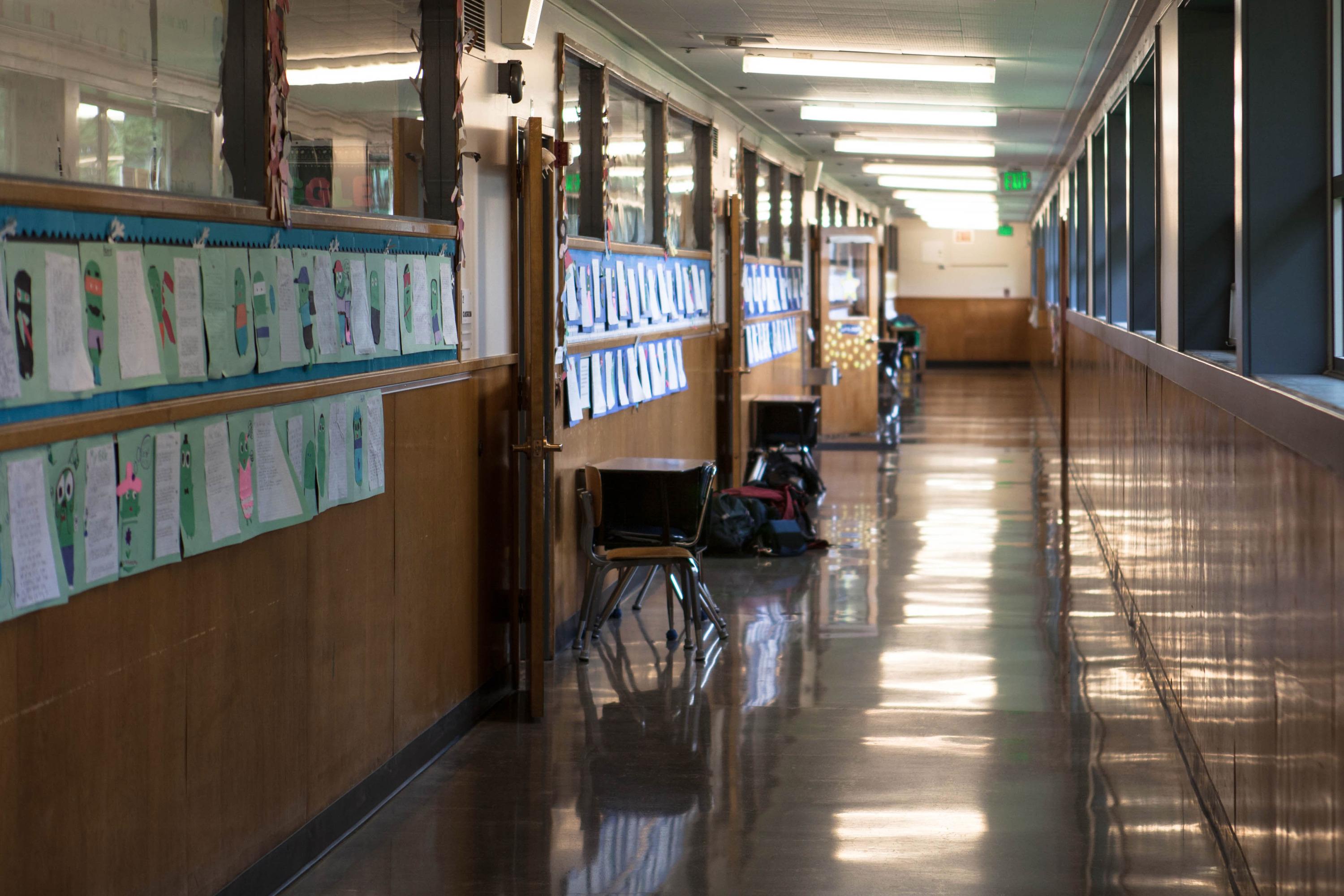
A school hallway sits empty.
Rob Manning / OPB
The underlying problem seems obvious: teachers can't teach the kids who don't show up.
Officials are trying to get a handle on chronic absenteeism, one of Oregon’s biggest problems with its schools.
State officials have released a "Chronic Absenteeism Report" in response to a law Oregon passed earlier this year, though the push to address chronic absenteeism in the state goes back even before that. Oregon leaders started getting more aggressive last May, when the Chief Education Office released a report noting that absenteeism can be caused by reasons beyond simply disengaged students or parents. The report pointed to health, cultural and situational causes for attendance problems.
Nearly one-fifth of Oregon students are considered “chronically absent,” meaning they miss at least 10 percent of the school year. Those absence rates vary by grade level, and to some extent, by gender and ethnicity.

Rates of chronic absenteeism vary by grade level, with high school students being the most likely to miss a lot of school, and elementary students, the least likely.
Chronic Absenteeism Statewide Plan / Oregon Department of Education / Chief Education Office
More than one quarter of Oregon’s Native American students are “chronically absent.” But the rates are high across the board with no ethnic grouping of Oregon students having chronic absence rates below 15 percent.
Researchers say chronically absent students are far less likely to graduate than kids who show up more regularly. The new report said students who are chronically absent in 12th grade have a 66 percent graduation rate. High school seniors who attend more regularly graduate 90 percent of the time.
Students may miss school because they’re sick or don’t have transportation. But sometimes they’re avoiding problems at school, such as being bullied or feeling victimized based on their race.
Five state agencies — the Oregon Department of Education and Chief Education Office in conjunction with the state’s Early Learning Division, Oregon Health Authority and Department of Human Services — drafted a plan aimed at quantifying and addressing absenteeism problems.
The plan divides the effort into several parts, each with multiple initiatives embedded inside. For instance, “Part A” focuses on publicly disclosing information on chronic absence. It calls for a “Statewide Data Portal” that the public can access to look into absence rates, and other information on schools. The public disclosure would also include a state website with recommended solutions and a community data report sent annually to families. Other major parts of the report focus on ways to track “chronic absenteeism,” approaches to reduce the problem and improve attendance.
Related: Class Of 2025: Follow Students From 1st Grade To Graduation
The plan recommends using a student-centered framework familiar to schools, often called a multi-tiered system of support. It leans heavily on collecting data, screening students for problems, and then trying out and monitoring solutions, much like how some schools systematically approach student behavior and special education.
Chronic absenteeism in Oregon is worse than in many other states. State and school district leaders have pointed to poor attendance as one of the reasons Oregon has among the lowest high school graduation rates in the country. Reports have shown that some efforts have paid dividends, such as having school administrators directly contact families with frequently absent students.
Some of those specific solutions show up in these latest recommendations. Suggestions include regularly calling families, doing home visits, and finding supports for problems that regularly arise.
The plan developed by officials from various state agencies emphasized having schools work with outside organizations, such as health care providers or culturally-specific non-profits, to address broader causes of chronic absence.
The total price tag of the plan is $6.83 million with the lion’s share of that cost going toward the creation of regional networks and staffing support for schools with the worst attendance problems.
The governor’s proposed budget dedicates $20 million to what’s called the "Graduation Equity Fund.” A spokesperson for Gov. Kate Brown said that money for the Chronic Absenteeism Plan’s recommendations would likely come from that fund. In addition to chronic absenteeism, the Graduation Equity Fund would pay to help schools implement “trauma-informed practices,” and create “early warning” data systems, meant to identify and help students who are at-risk of not graduating.
